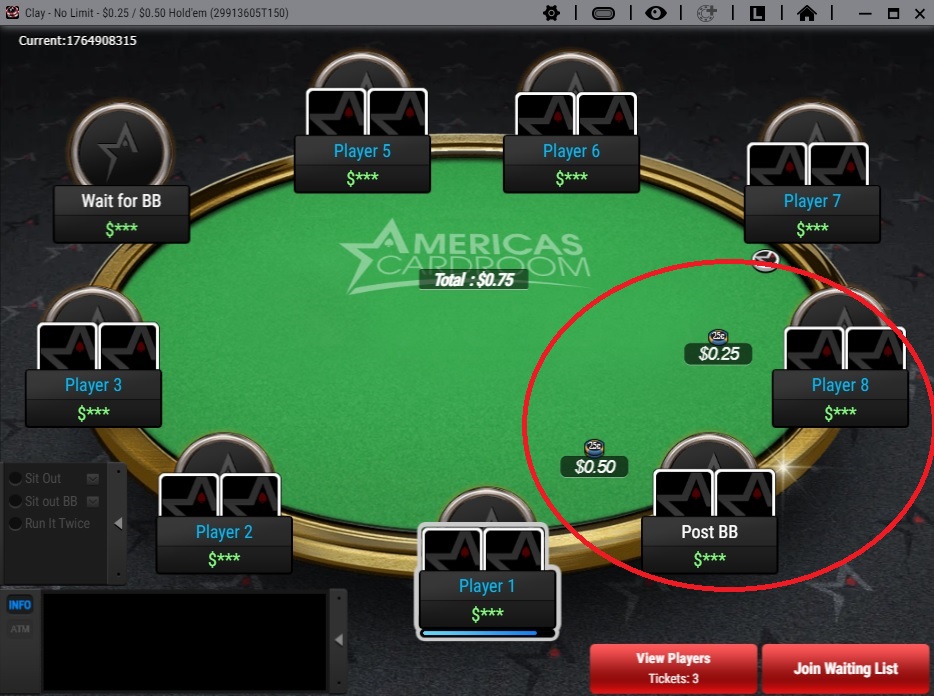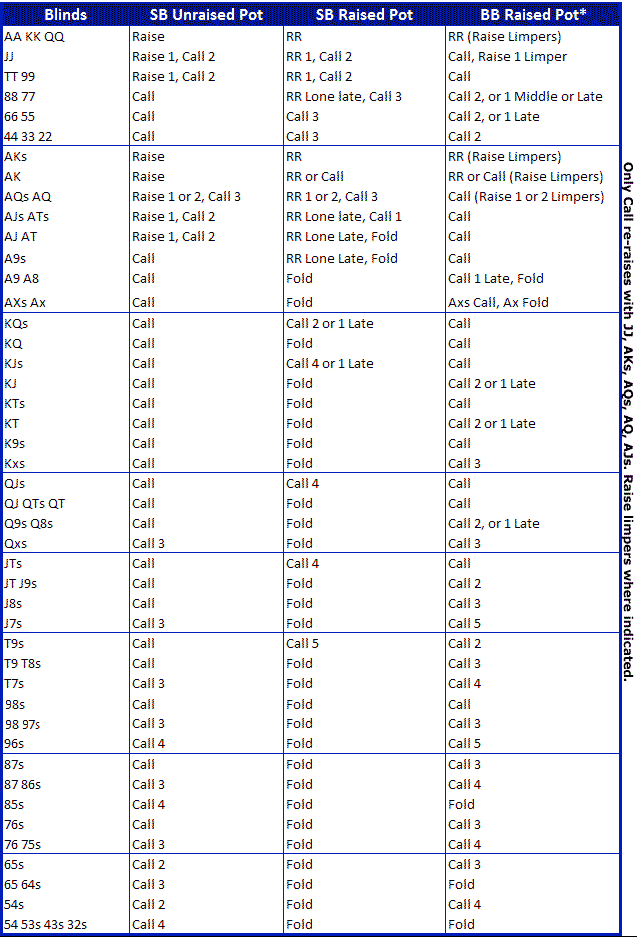
Playing from the blinds in Texas Hold’em can be quite challenging due to the positional disadvantage – you’re first to act on all post-flop rounds of betting. That said, having a sound strategy can help to minimize your losses at these positions.
Playing from the blinds are tricky. Over time, you will lose money here, so you have to play optimally to minimize these losses. You have to play tight post flop, but since you already have some money invested, this allows you to call and play more hands than you otherwise would pre-flop.
Check out poker hands chart for playing the blinds:
Playing the Blinds Hand Chart

The first column shows you potential hands you may play from the blinds. The second column shows your action from the Small Blind in an unraised pot. The second column shows your action from the Small Blind in a raised pot. The fourth column shows your action from the Big Blind in a raised pot. The number next to the action – ie Raise 1 – refers to the number of callers or limpers before your turn, so in this case if there is one limper before you, you would raise. If the chart shows Call 2, then you would just call if there were two limpers before you.
Here are some basic tips for playing from the blinds:
Play Tight: You should generally be playing tighter from the blinds than from other positions. This is because you’ll be out of position throughout the hand, making it harder to win pots. Stick to strong starting hands and avoid marginal or weak hands that could get you into trouble.
Defend Your Big Blind Appropriately: With more and more players becoming aggressive on the button, it’s important to defend your big blind with a suitable range of hands. This doesn’t mean always re-raising, but rather calling more often. You’re getting a discount to see the flop, so you can justify calling with a wider range of hands.
Be Selective About Your Small Blind: Despite having money invested, the small blind is arguably the worst position at the table since you will always be out of position post-flop. You should be even more selective about the hands you play from the small blind than from the big blind.
Apply Pressure with Strong Hands: When you have a strong hand in the blinds, don’t be afraid to play aggressively. Re-raise (3-bet) players who try to steal too often. This can discourage them from doing so in the future, earning you respect at the table.
Avoid Tricky Situations Post-Flop: Being out of position can make it difficult to control the pot or bluff your opponents, so try to avoid getting into tricky situations. If the flop doesn’t improve your hand or presents a lot of drawing possibilities, it might be better to check and see what your opponents do.
Manage Your Expectations: It’s important to know that the blinds are typically the least profitable positions over the long term. Your main goal when playing from the blinds should be to minimize losses rather than to make big gains.
Observe Your Opponents: Pay close attention to your opponents’ tendencies. Are they raising a lot when it folds to them in late position? How do they react to being 3-bet? Use this information to adjust your strategy accordingly.
Mind the Stack Sizes: Always consider your stack size and the stack sizes of your opponents. The effectiveness of certain plays, like 3-betting or bluffing, can often depend on how deep the stacks are.
Remember, the blinds are a challenging but essential part of Texas Hold’em strategy. With careful play and good understanding of your opponents, you can minimize your losses from these tough positions.
Leave a Review
Submit your review | |







